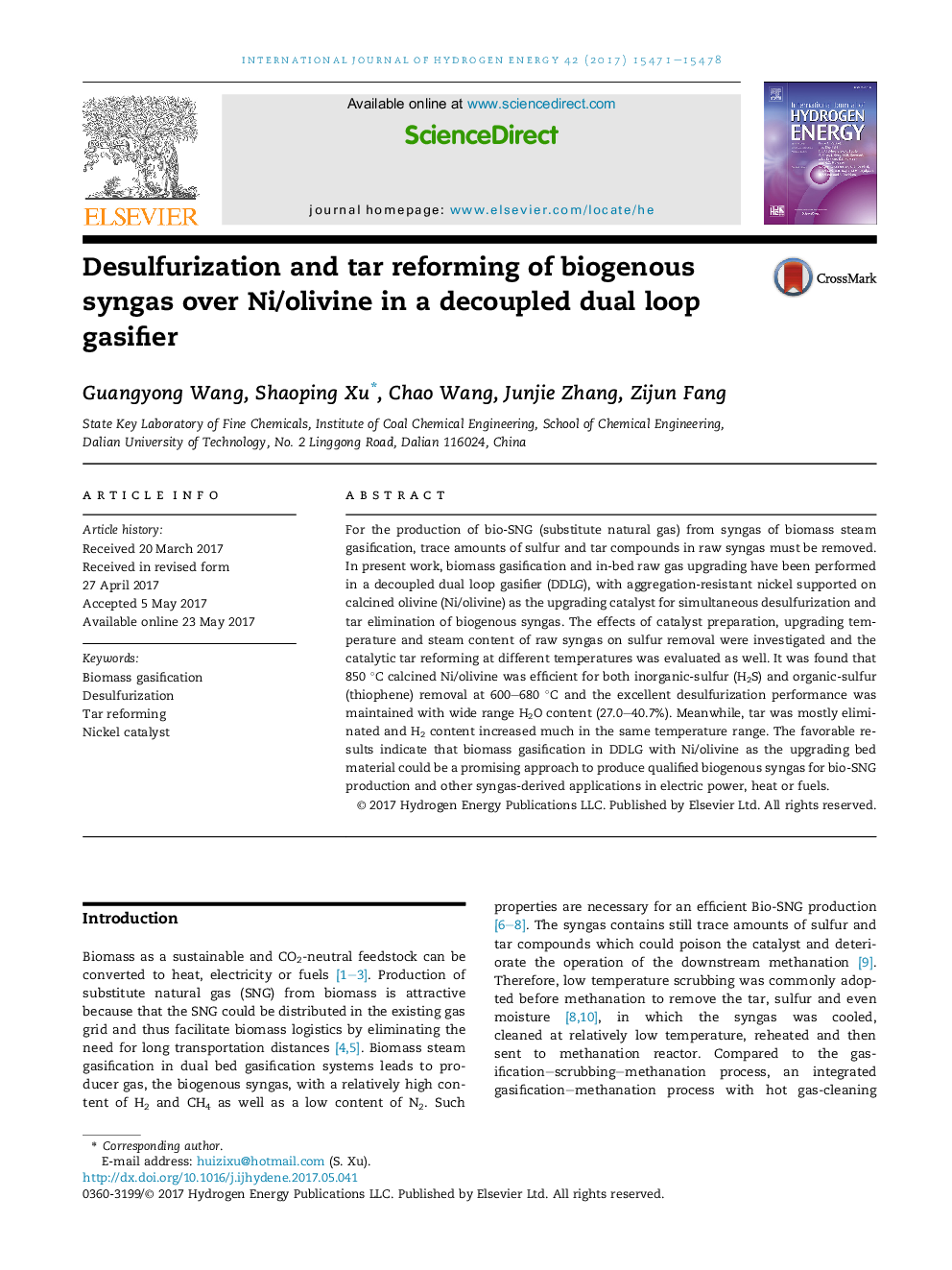| Article ID | Journal | Published Year | Pages | File Type |
|---|---|---|---|---|
| 5146574 | International Journal of Hydrogen Energy | 2017 | 8 Pages |
Abstract
For the production of bio-SNG (substitute natural gas) from syngas of biomass steam gasification, trace amounts of sulfur and tar compounds in raw syngas must be removed. In present work, biomass gasification and in-bed raw gas upgrading have been performed in a decoupled dual loop gasifier (DDLG), with aggregation-resistant nickel supported on calcined olivine (Ni/olivine) as the upgrading catalyst for simultaneous desulfurization and tar elimination of biogenous syngas. The effects of catalyst preparation, upgrading temperature and steam content of raw syngas on sulfur removal were investigated and the catalytic tar reforming at different temperatures was evaluated as well. It was found that 850 °C calcined Ni/olivine was efficient for both inorganic-sulfur (H2S) and organic-sulfur (thiophene) removal at 600-680 °C and the excellent desulfurization performance was maintained with wide range H2O content (27.0-40.7%). Meanwhile, tar was mostly eliminated and H2 content increased much in the same temperature range. The favorable results indicate that biomass gasification in DDLG with Ni/olivine as the upgrading bed material could be a promising approach to produce qualified biogenous syngas for bio-SNG production and other syngas-derived applications in electric power, heat or fuels.
Related Topics
Physical Sciences and Engineering
Chemistry
Electrochemistry
Authors
Guangyong Wang, Shaoping Xu, Chao Wang, Junjie Zhang, Zijun Fang,
